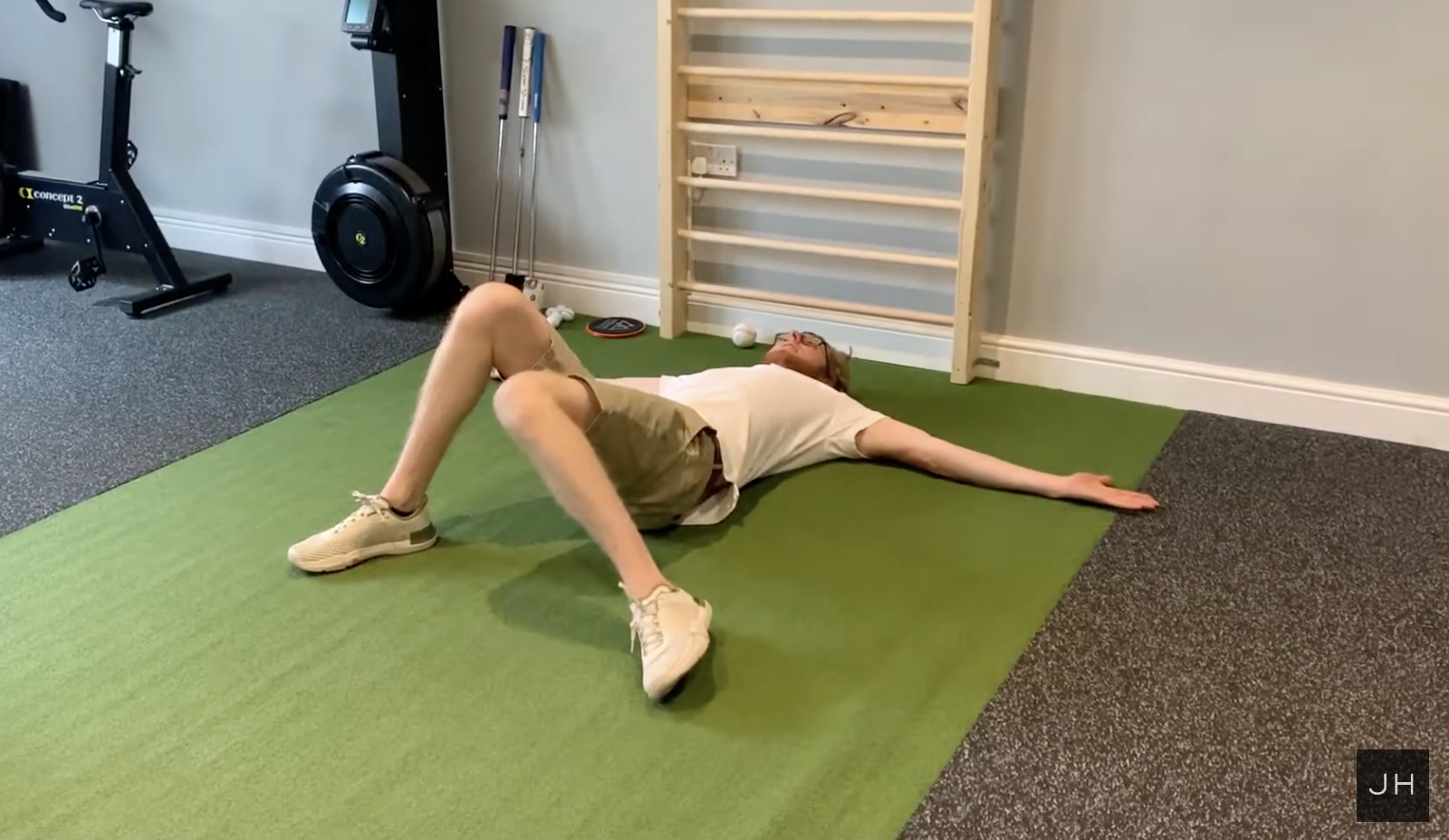IMPROVE MY GAME
Articles
5 Potential Causes of Lower Back Pain for Golfers (And What to Do About It)
Tue Jun 6, 2023 by Jon Hodginkson
It’s no secret that lower back pain is a big problem in golf.
The rotation, speed and repetition of the golf swing all put the lower back at risk.
But that doesn’t mean that injury and pain are inevitable. There are things we can do to minimize that risk.
Below are 5 causes of lower back pain that must be addressed if you want to keep your lower back healthy and keep playing your best golf for years to come.
Cause #1: Lack of Hip Internal Rotation
Hip internal rotation is the twisting movement of your thigh inward from your hip joint.
For a right-handed golfer, the right hip travels into internal rotation on the backswing, and then the left hip travels into internal rotation on the follow-through.
If you lack internal rotation in either hip, then you may compensate by finding that missing rotation through the lower back, which increases your risk of pain and injury.
Here’s a great exercise to help improve your hip internal rotation:
Cause #2: Lack of Thoracic Rotation
The thoracic spine is located in the upper and middle part of the back.
On average, each of the 12 thoracic vertebrae can rotate approximately 3 degrees, meaning the entire thoracic spine is capable of rotating 30-35 degrees to each side.
The 5 vertebrae of the lumbar spine (lower back), on the other hand, are only capable of rotating 2 degrees. The total rotation of the lumbar spine is just 10 degrees.
In other words, the thoracic spine likes to rotate and the lumbar spine doesn’t.
But, if the thoracic spine is unable to rotate, then you may compensate by rotating through the lumbar spine, which increases the risk of pain and injury.
As Bogduk describes in ‘Clinical anatomy of the lumbar spine and sacrum’:
“Rotation of more than 3 ° at any lumbar segment could damage the articular surface and tear collagen fibers that make up the disc between each vertebra.”
Recommended exercise:
Cause #3: Lack of Core Stability
The muscles of the core include the abdominals, obliques and glutes.
While core strength refers to the ability of these muscles to produce force, core stability refers to the ability of these muscles to resist force.
To keep the lower back stable and protected in a dynamic, high-velocity movement like the golf swing, core stability - not just strength - is essential.
Below are 2 exercises you can use to improve your core stability:
Cause #4: Swing Mechanics
I’m not a swing coach, so I can’t give advice on swing mechanics.
However, certain swing characteristics are known to lead to back problems.
According to TPI co-founder Dave Phillips:
“Reverse spine angle is the number one cause of lower back pain in golf.”

For a right-handed golfer, reverse spine angle is characterised by any excessive upper body backward bend or excessive left lateral upper body bend during the backswing.
Quoting from the TPI article on Reverse Spine Angle:
“Reverse spine angle puts excessive tension on the lower back due to a forced inhibition of the abdominal musculature during the backswing, and excessive compressive loads placed on the right side of the spine at impact.”
Reverse spine angle has a number of causes, but the three of the main ones are the physical limitations described earlier in this article: lack of thoracic rotation, lack of hip internal rotation and lack of core stability.
You can learn more about other swing characteristics that cause lower back pain here.
Cause #5: Lifestyle Factors
Historically, back pain was thought to be related to the nature and severity of an injury or anatomical issue, but now it’s clear that many other factors also play a role.
These factors include age, gender, trauma, obesity, depression, physical inactivity, smoking, and poor diet. There is also evidence that stress, sleep, alcohol consumption and even job satisfaction can affect back pain.
Some of these factors are within your control while others are not.
Of all the factors that you are able to influence, obesity is the one most strongly associated with chronic lower back pain.
It is generally thought that excess weight in the midsection aggravates the lower back by shifting the pelvis forward, causing the spine to curve excessively inward.
What next?
After addressing the causes of lower back pain listed above, the next best thing you can do is work with a golf fitness professional to build a base of strength and maintain proper mobility.
This can keep your lower back healthy for the long haul.
If you would like to learn more about lower back pain for golfers and get a 1-page ‘cheat sheet’ summarising the key things you need to know, click here:
Lower Back Pain: The Definitive Guide for Golfers

Jon Hodgkinson is a TPI-certified personal trainer and biomechanics coach with more than a decade of hands-on coaching experience. Working with clients both online and in-person at his private studio, Jon specializes in helping golfers play better, for longer. Visit his website here: Jon Hodgkinson Golf Fitness
References
https://www.ncbi.nlm.nih.gov/pmc/articles/PMC4335481/
https://pubmed.ncbi.nlm.nih.gov/14977679/
https://pubmed.ncbi.nlm.nih.gov/25398245/
https://pubmed.ncbi.nlm.nih.gov/8827315/
https://pubmed.ncbi.nlm.nih.gov/12190279/
https://www.ncbi.nlm.nih.gov/pmc/articles/PMC6126929/
